
The Dean Cemetery is a historically important Victorian cemetery north of the Dean Village, west of Edinburgh city centre, in Scotland. It lies between Queensferry Road and the Water of Leith, bounded on its east side by Dean Path and on its west by the Dean Gallery. A 20th-century extension lies detached from the main cemetery to the north of Ravelston Terrace. The main cemetery is accessible through the main gate on its east side, through a "grace and favour" access door from the grounds of Dean Gallery and from Ravelston Terrace. The modern extension is only accessible at the junction of Dean Path and Queensferry Road.
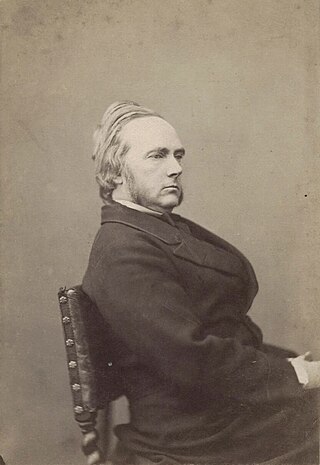
George John Douglas Campbell, 8th and 1st Duke of Argyll, was a Scottish polymath and Liberal statesman. He made a significant geological discovery in the 1850s when his tenant found fossilized leaves embedded among basalt lava on the Island of Mull. He also helped to popularize ornithology and was one of the first to give a detailed account of the principles of bird flight in the hopes of advancing artificial aerial navigation. His literary output was extensive writing on topics varying from science and theology to economy and politics. In addition to this, he served prominently in the administrations of Lord Aberdeen, Lord Palmerston, John Russell and William Gladstone.

Alan StevensonFRSE MInstCE was a Scottish civil engineer, known for designing and building lighthouses in and around Scotland.
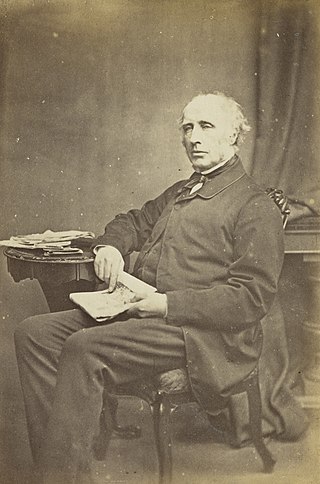
Cosmo Nelson Innes FRSE was a Scottish advocate, judge, historian and antiquary. He served as Advocate-Depute, Sheriff of Elginshire, and Principal Clerk of Session.
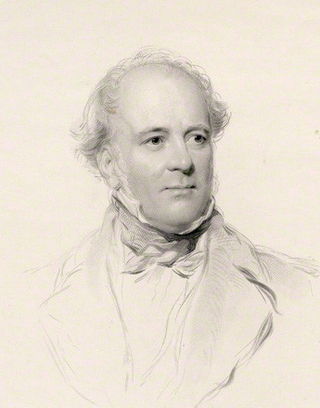
Andrew Rutherfurd, Lord Rutherfurd, was a Scottish advocate, judge and politician.

William Chambers of Glenormiston was a Scottish publisher and politician, the brother of Robert Chambers. The brothers were influential in the mid-19th century, in both scientific and political circles.

The Randolph family of Virginia is a prominent political family, whose members contributed to the politics of Colonial Virginia and Virginia after statehood. They are descended from the Randolphs of Morton Morrell, Warwickshire, England. The first Randolph in America was Edward Fitz Randolph, who settled in Massachusetts in 1630. His nephew, William Randolph, later came to Virginia as an orphan in 1669. He made his home at Turkey Island along the James River. Because of their numerous progeny, William Randolph and his wife, Mary Isham Randolph, have been referred to as "the Adam and Eve of Virginia". The Randolph family was the wealthiest and most powerful family in 18th-century Virginia.

Edwin Richard Wyndham-Quin, 3rd Earl of Dunraven and Mount-Earl, KP, PC, FRAI, FSA, FRGS, FRS, styled Viscount Adare from 1824 to 1850, was an Irish peer, Conservative Member of Parliament, and archaeologist.
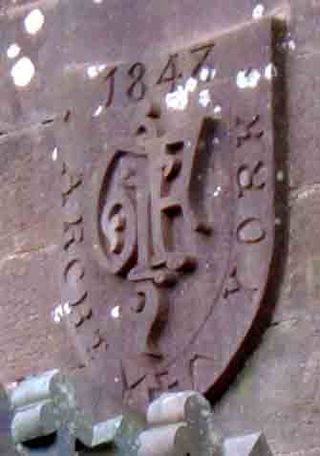
George Fowler Jones was an architect and early amateur photographer who was born in Scotland but based for most of his working life in York.
The bibliography of Charles Dickens (1812–1870) includes more than a dozen major novels, many short stories, several plays, several non-fiction books, and individual essays and articles. Dickens's novels were serialized initially in weekly or monthly magazines, then reprinted in standard book formats.

John Thomas Rochead was a Scottish architect. He is most noteworthy on a national scale for having been the designer of the Wallace Monument.
Captain Thomas Arthur Nelson MID was a Scottish international rugby union player, soldier and publisher in his family's firm of Thomas Nelson and Sons. He was killed in the First World War.

Edmund Ronalds FCS FRSE was an English academic and industrial chemist. He was co-author of a seminal series of books on chemical technology that helped begin university teaching of chemical applications for industry, and was a pioneer in the incorporation of advanced research into a manufacturing firm.
Alexander Handyside Ritchie was a Scottish sculptor born in Musselburgh in 1804, the son of James Ritchie, a local brickmaker and ornamental plasterer, and his wife Euphemia. The father in turn was the son of a fisherman and amateur sculptor.

Patric Park was a Scottish sculptor.

Henry Lawson (1774–1855) was an English astronomer, member of the Royal Astronomical Society, the Royal Society, and the British Meteorological Society, as well as an inventor, designer, science educator, and philanthropist. He observed an occultation of Saturn on 8 May 1832, Johann Gottfried Galle's first comet in December 1839 and January 1840, and recorded the falling stars of 12–13 November 1841. He claimed to have been related to Catherine Parr.
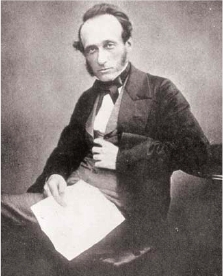
Robert Warington FRS was an English chemist considered the driving force behind the creation of the world's first enduring chemistry society, The Chemical Society of London, which later became the Royal Society of Chemistry.

Charles Harriott Smith (1792–1864) was an English architect and architectural sculptor involved in several prestigious projects, ranging from the National Gallery to the Houses of Parliament. His iconic works include the capital of Nelson's Column supporting the statue by Edward Hodges Baily.

















